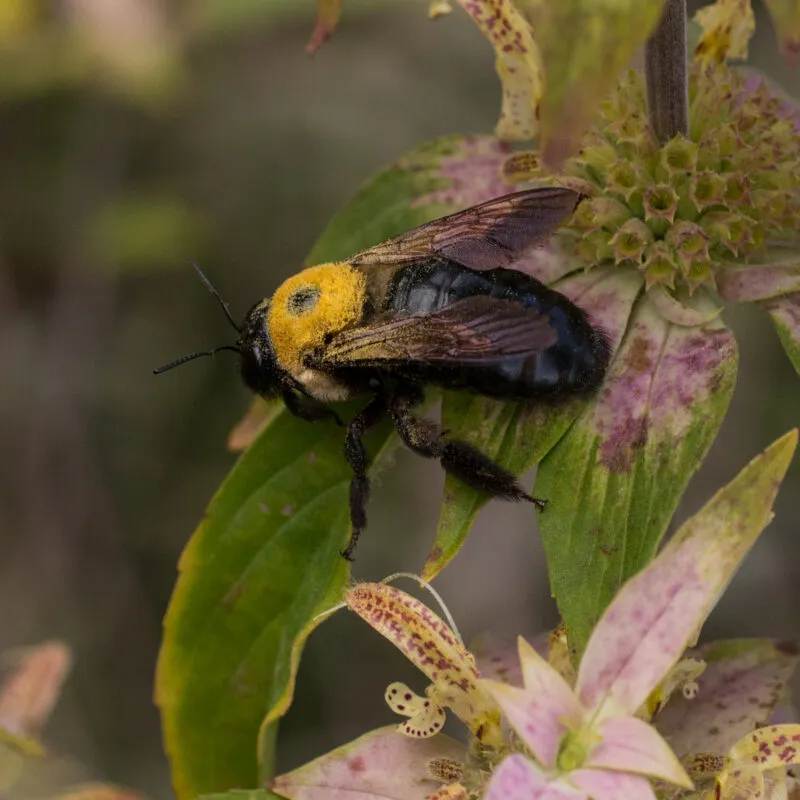Eastern carpenter bees (Xylocopa virginica) are fascinating insects known for their wood-boring behavior and vital role as pollinators. These bees are commonly mistaken for bumblebees due to their similar appearance, but they are distinct in both behavior and habitat preferences. Understanding where Eastern carpenter bees can be found is crucial for anyone interested in ecology, pest control, or simply observing these unique creatures.
Geographic Range

Eastern carpenter bees are primarily found in the eastern half of the United States, extending from the Gulf Coast to southern Canada. Their range includes most of the eastern states, stretching as far west as Texas and Kansas. They thrive in temperate regions where wood and flowers are abundant, making forests, suburban areas, and gardens ideal habitats.
Habitat Preferences
Eastern carpenter bees are versatile in their habitat selection, but they have a strong preference for wooded areas. These bees are especially attracted to softwoods such as pine, cedar, and redwood, where they excavate tunnels to build their nests. However, they are not limited to natural wood sources; they can also be found in human-made structures such as decks, fences, and wooden siding. This adaptability often brings them into close contact with human habitats.
- Forested Areas:
- Carpenter bees are naturally drawn to forests, where they find ample wood to bore into and flowers to forage for nectar. They prefer dead or decaying wood, which is easier to excavate. In forested regions, you can often spot them hovering around tree trunks, wooden logs, or dead branches.
- Urban and Suburban Areas:
- In suburban settings, carpenter bees frequently nest in wooden structures like pergolas, gazebos, and eaves of houses. Their presence is often identified by small, round holes in wood and piles of sawdust beneath them. While they are not aggressive, their nesting behavior can cause structural damage over time, making them a concern for homeowners.
- Gardens and Yards:
- Gardens and yards with plenty of flowering plants are also popular spots for carpenter bees. They are important pollinators and are often seen flitting between blossoms, gathering nectar. If you have a garden with wooden furniture or fences, you may notice their activity in spring and summer, when they are most active.
Seasonal Activity
Eastern carpenter bees are most active in the spring and early summer. During this time, female bees search for suitable wood to create nesting tunnels, while males patrol the area, often appearing territorial but rarely stinging. Their presence in a particular location may be more noticeable during these months, as they focus on nesting and foraging.
Signs of Carpenter Bees in Your Area
Identifying the presence of Eastern carpenter bees can be done by looking for the following signs:
- Small, Round Holes: These bees drill nearly perfect round holes about 1/2 inch in diameter, usually in untreated or unpainted wood.
- Sawdust Piles: Beneath these holes, you’ll often find small piles of sawdust, a result of their drilling activity.
- Bee Activity: You may observe large, shiny bees hovering near wooden structures. Males are more likely to hover around the entrances to nests, while females are busy excavating or foraging.
Conservation and Control
While Eastern carpenter bees play a crucial role in pollination, their nesting habits can lead to structural damage over time, especially if left unchecked. Homeowners can manage their presence by treating or painting wood surfaces, as carpenter bees prefer untreated wood. Additionally, physical barriers, such as screens, can prevent them from accessing certain areas.
If you encounter carpenter bees in your area, it’s essential to balance control measures with conservation efforts. These bees are beneficial pollinators, and if possible, non-lethal methods should be used to discourage nesting in problematic areas.
Final Toughts
Eastern carpenter bees are widespread across the eastern United States and can be found in various habitats, from dense forests to urban gardens. Recognizing their presence and understanding their habitat preferences can help in managing their impact while appreciating their role in the ecosystem. Whether you’re observing them in a forest or managing their nesting behavior around your home, these bees are an integral part of the natural world.

